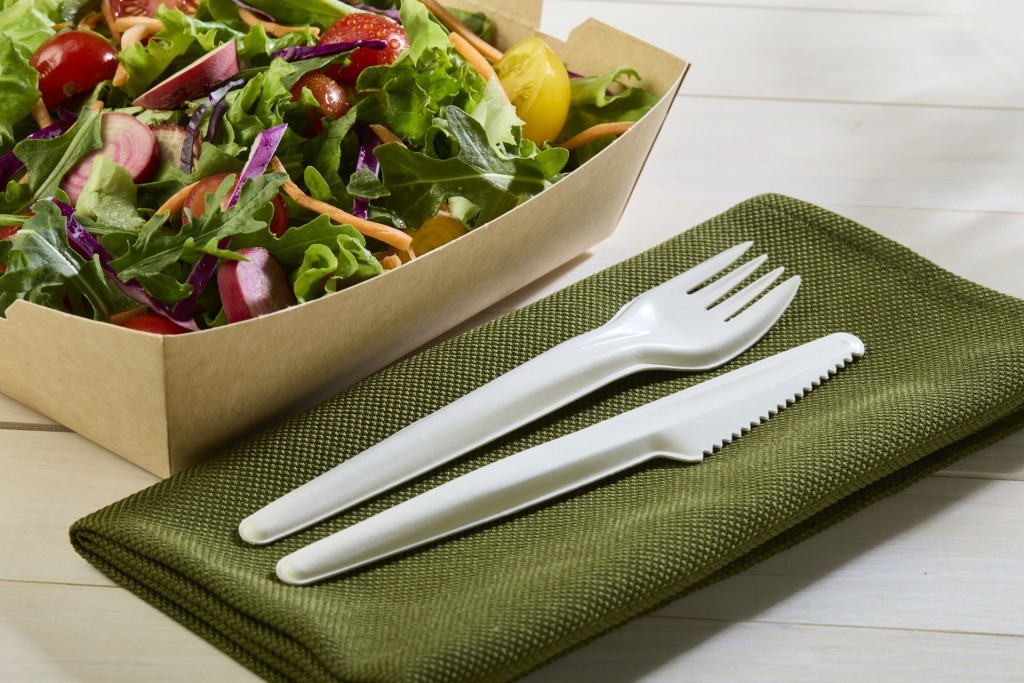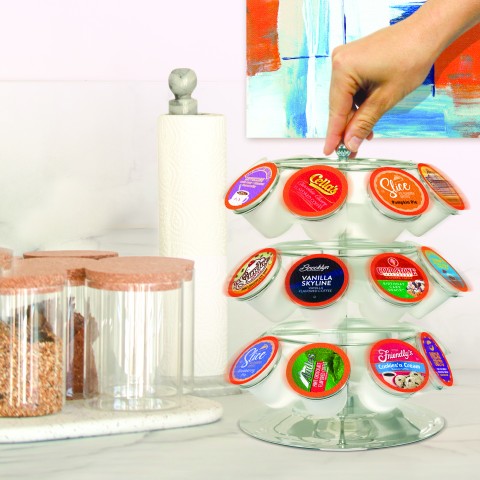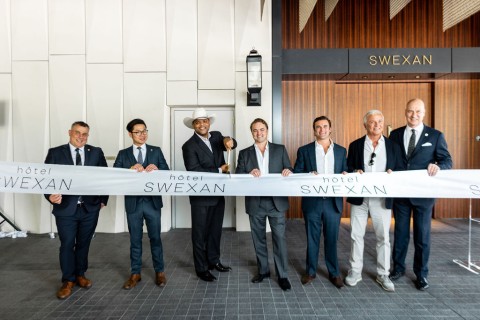By Robert Beagan, Director of Product Management, Sabert
For many restaurants, suppliers and food service providers, the concept of starting a sustainability program can seem like a daunting task. And rightfully so. Many people define sustainability and knowing how, where and when to begin can be quite confusing.
Kickstart Your Sustainable Journey: 5 Steps to Eco-Friendly Living
However, with consumers demanding their favorite brands prioritize sustainability more than ever before, the option to be a more environmentally responsible business isn’t much of an option at all. According to KPMG’s 2023 Winter Consumer Pulse Survey, 37 percent of U.S. consumers consider environmental sustainability when making a purchase. Of that group, more than 75 percent are looking for environmentally friendly products and/or packaging. When it comes to packaging specifically, a 2023 McKinsey survey showed that, when making purchasing decisions, 43 percent of Americans say “environmental impact is an extremely or very important” characteristic of packaging. It’s safe to assume that these figures will only continue to increase in the years ahead.
So, yes, increasing a business’s focus on its environmental impact is important. But where do restaurants and food service providers – especially small or single-operation ones – even begin?
The good news is that being more sustainable can be done without overhauling your current business practices. In some instances, it may not even require changes at all but rather highlighting what’s already being done or simply making small adjustments to better enable customers themselves to be more sustainable when engaging with your business.
From better highlighting current efforts to making simple changes to food packaging offerings, here are five steps to begin a sustainability journey.
1. Analyze your current sustainability footprint, consumer behaviors and areas of opportunity
Many businesses may have already dipped their toes into the world of sustainability but simply haven’t realized it or haven’t promoted it. Start by assessing where you are on your sustainability journey. Do you still offer Styrofoam takeout containers? Or are you providing customers with recyclable plastic containers or compostable offerings? Do you have a food waste reduction plan and/or are you composting food scraps currently? If you say yes to any of these, your sustainability journey has begun.
Secondly, it’s important to substantiate your sustainability efforts with third-party resources like certifications or conducting a Life Cycle Assessment (LCA) which looks at the environmental impact of your sustainability strategy, enabling informed and strategic decisions towards your eco-friendly efforts.
Next, consider your customers’ behaviors, community infrastructure and the product’s end use. Use a phase-in approach and begin by picking off the low-hanging fruit – what will a majority of your customers do with food waste and food packaging once they’re done with it? If you operate in a city where compostability options are scarce, offering compostable packaging may not make sense for your business. If you find that customers are more likely to recycle than compost, then that should be considered. If you are a fast casual operation where most customers dine in-store and where you can control disposal, compostable options may be a worthwhile consideration, especially with the expansion of on-site and pick-up composting services. If food is going to be consumed on site, in a closed loop, you can most likely collect the packaging and the food waste in one bin.
Understand where your product will be consumed the most and design your strategy around the most common denominator. Sustainability is often a continuous evolution, especially in the case of legislation which might mean having different packaging options for different regions. Work closely with your packaging provider to build a portfolio that fits with the opportunities you have to improve your sustainability efforts.
2. Consider reusability in concert with recyclability and compostability
Increasingly, reusable takeout containers – where customers are provided multi-use packaging with the promise to return them soon after use or during their next takeout/delivery experience – are becoming a popular option for restaurants looking to improve their sustainability efforts. However, they’re not without risks and may be difficult to drive adoption. Still, they may make sense for some restaurants and food service providers with a strong repeat customer base and/or loyalty program.
If possible, use loyalty programs to offer customers the option to choose reusable containers and provide incentives for them to return the containers for reuse. For first-time customers or those who may not want to return the containers or have a delivery driver pick them up during the next order, offering recyclable or compostable options gives customers another option to choose from – and gives them another role to play in their own sustainability journey. Working with a food packaging provider with a wide selection of options and is well-versed in sustainability can help you choose the right solutions based on your customer behaviors.
3. Reduce food waste with proper portion control
Understandably, many restaurants want to select one packaging product that is a one-size-fits-all product that can fit all food offerings. Yet choosing containers that are too big, with the food not filling the container, gives the perception of a poor value. Of course, choosing containers that are too small or not fit for use presents an equally unappealing challenge, with more than three-quarters of Americans (77%) saying they’re concerned about the environmental impact of food waste. Many restaurants feel that they must choose to live with a perceived loss of value or choose to overfill the container with more food than is necessary. Right-size portion control is critical to not only prevent food waste but also maintain quality and packaging performance.
While stock containers may have some advantages, building out a tailored set of products with a handful of sustainable options is the best way to merchandise prepared food, display the commitment to sustainability and demonstrate value through proper portion control. The best food packaging providers today will work to either customize packaging for your specific needs or work within their product portfolio to design a selection of options that fit your menu even as it evolves.
4. Better communicate what you’re already doing through new menu photos, certifications and social media
Many consumers like to feel like they have the choice to decide where to eat, how to eat and how to make sustainability part of their purchasing decision. For instance, according to a 2022 study from Technomic, 72 percent of consumers ages 18-34 said they are “more likely to dine at a restaurant or foodservice establishment that describes itself as socially responsible/sustainable.” Further, 90 percent of this same age group say they are very or somewhat likely to choose one restaurant or foodservice establishment over another because of its commitment to social responsibility / sustainability and / or the menu was sustainable. With many restaurants and food service providers already offering sustainable options in some way already yet not promoting them enough – whether it’s through packaging, such as recycled plastic solutions, a waste reduction strategy or otherwise – they could be missing out on potential sales opportunities.
You can start by better promoting your current efforts, so customers are aware of the deliberate steps you’ve already taken. Shoot photos of your food for online menus that showcase products in the sustainable takeout containers customers will receive at home rather than the plateware used for in-restaurant dining. This is especially helpful on third-party delivery and takeout platforms like Grubhub, Caviar DoorDash and others so first-time and repeat customers know that packaging sustainability is a priority. Additionally, talk about how your packaging products are recyclable or compostable on social media and why offering these options is important to you.
Showing customers not only that they are purchasing from a business that prioritizes sustainability, but that the products you offer are certified either home-compostable, recyclable or otherwise, allows them to make even more informed decisions.
5. Make sure sustainability complements, not detracts from, your food offering
The final point but perhaps the most important is to ensure that sustainability does not come at the cost of your food or your business. If the steps being taken to be more sustainable means significantly cutting profit margins or losing customers, then the juice isn’t worth the squeeze.
Sustainability efforts should add to your offering and increase customers’ likelihood of returning. The right sustainable packaging products can enhance the look and taste of your food while also being better for the environment. Sabert has been doing this for decades with customizable options fit for food use, whether it’s hot or cold food, recyclable or compostable packaging, or one of the thousands of other options we’ve designed for customers.
By working with an expert food packaging provider, you can begin or enhance your sustainability journey with just a few simple steps.
Read Also: Unique Encounter: Get Gut Punched at the Punk Rock Museum
About the Author
Robert Beagan is Director of Sustainable Growth Platforms for Sabert Corporation. He has spent more than a decade as a marketing director, and an award-winning product manager helping global organizations develop, brand and launch packaging innovation that enhances the customer experience and promotes end-of-life recovery. In his current role, Robert is responsible for charting Sabert’s future growth in plant-based packaging. He leads the development of the organization’s growth platforms dedicated to accelerating the expansion of sustainable packaging in North America. Robert has a deep understanding of product development and packaging engineering having spent his career in technical product management roles spanning from print manufacturing to plastic and fiber packaging manufacturing.








